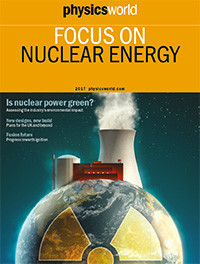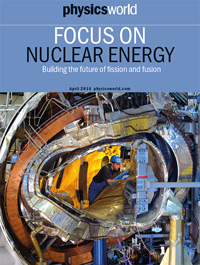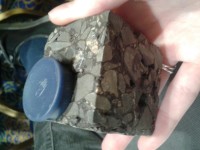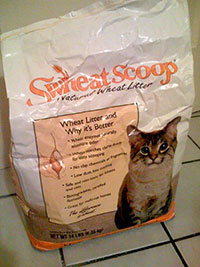Tag archives: nuclear waste
Following the ups and downs of nuclear energy
 By Margaret Harris
By Margaret Harris
If you’re finding the pace of geopolitical news a bit too rapid at the moment, spare a thought for physicists and engineers working in the nuclear energy sector.
Towards the end of last month, the venerable energy firm Westinghouse Electric issued a press release in which it proudly announced that its AP1000 reactor – a relatively new “passively safe” design in which the reactor core is kept cool without the need for powered pumps or other “active” equipment – had passed a major UK regulatory review. Ordinarily, this would be cause for celebration. The so-called “Generic Design Assessment” process takes years, and completing it helps pave the way for building AP1000s within the UK. An international partnership called NuGen has long hoped to do just that, on a site near Sellafield in north-west England, so in normal times, you might expect it to be celebrating, too.
Physics World 2016 Focus on Nuclear Energy is out now
By Michael Banks
Proponents of nuclear power in the UK have endured an agonizing wait for Hinckley Point C – a European pressurized water reactor (EPR) to be built in south-west England that would fulfil 3.5% of the UK’s electricity needs. Earlier this year, it looked as if the French utility giant EDF would finally give the project the thumbs up and start construction. However, following months of political wrangling – and resignations by senior EDF executives – a final decision by the EDF board is yet to see the light of day.

Hinckley Point C is not the only EPR under construction that has been beset with delays and cost hikes: two in China, one in France and one in Finland have also had issues. In this first-ever Physics World Focus on Nuclear Energy, we delve into the EPR design and Hinckley Point C, as well as look ahead to other, more ambitious reactor designs in the pipeline – known as generation-IV designs – that could vastly reduce the amount of nuclear waste produced. Although work on such designs has slowed following the 2011 Fukushima nuclear accident in Japan, supporters argue that generation IV will still play a vital role in the long term.
The focus issue is not only devoted to fission, but fusion too. For decades physicists have dreamed of using fusion to generate electricity and, with construction well under way on the ITER fusion tokamak in Cadarache, France, that vision is now getting closer to a reality. But is ITER the only way forward? We explore how several private firms are developing small-scale fusion technologies, while in Germany a novel “stellarator” device has just started up that promises to deliver a “steady state” plasma.
View all posts by this author | View this author's profile
Something more concrete

A sample of asphalt to which steel-wool fibres have been added, making the material magnetic.
By Margaret Harris at the AAAS Meeting in Washington, DC
Although Thursday’s LIGO result was extremely exciting, I’m afraid I can only spend so much time pondering ripples in the fabric of space–time before I start yearning for something a little more…concrete. Like, well, concrete. And asphalt. And cement. These decidedly ordinary materials were the stars of two of the most fascinating talks I’ve seen at the AAAS meeting here in Washington DC over the past two days.
First up was Erik Schlangen, a civil engineer at the Delft University of Technology in the Netherlands who develops “self-healing” materials. One of his projects (which you can watch him demonstrate in a TED talk) involves mixing porous asphalt with fibres of steel wool. The resulting conglomerate is magnetic (that’s a magnet sticking to it in the photo), which means that microscopic cracks in it can be repaired using induction heating. The heat melts the bitumen in the asphalt, allowing it to re-fuse, but the surrounding aggregate remains relatively cool – meaning that cars can be driven over asphalt road surfaces almost as soon as the repair is complete.
View all posts by this author | View this author's profile
Littered with errors
By Michael Banks
 Cat litter and radioactive waste – not a combination you would normally expect to come across (although some cat owners may disagree).
Cat litter and radioactive waste – not a combination you would normally expect to come across (although some cat owners may disagree).
But a report by the US Department of Energy has squarely blamed kitty litter for the explosion of a single drum of nuclear waste – dubbed “68660” – that burst open at the Waste Isolation Pilot Plant (WIPP) in New Mexico in February 2014.
A year-long investigation by a nine-member panel – led by David Wilson of the Savannah River National Laboratory – has concluded that the incident was caused by the use of the wrong brand of feline litter.
As cat litter is highly absorbent, for years it has been used to help keep nuclear waste contained. Indeed, each barrel of waste at the WIPP is filled with about 26 kg of the stuff.
View all posts by this author | View this author's profile